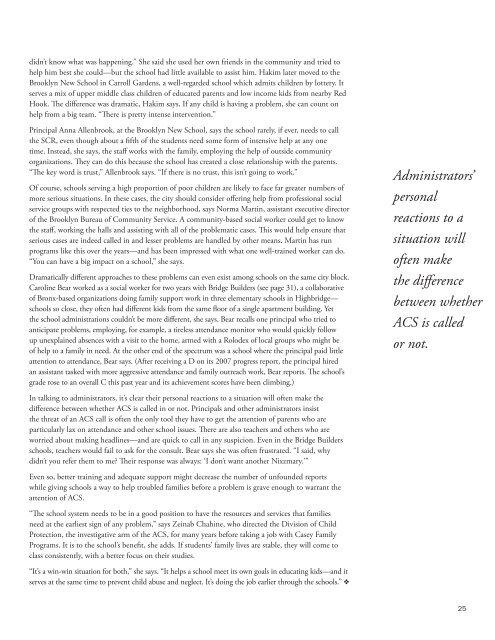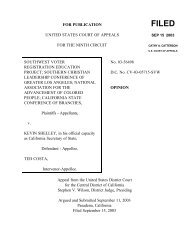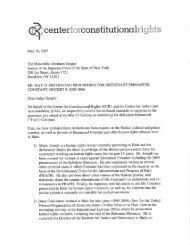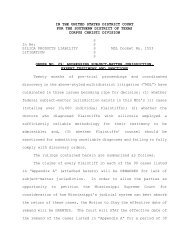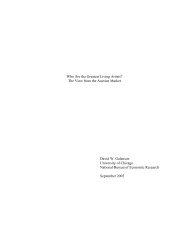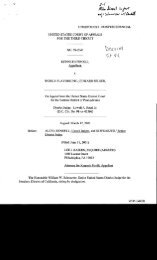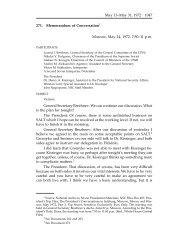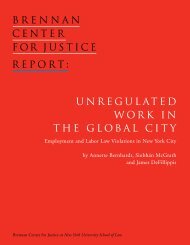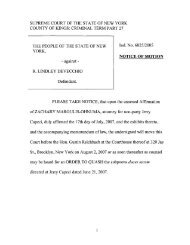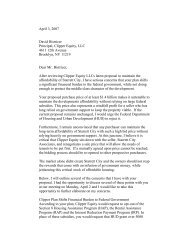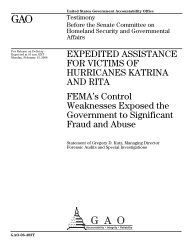Strengthening Schools by Strengthening Families
Strengthening Schools by Strengthening Families
Strengthening Schools by Strengthening Families
Create successful ePaper yourself
Turn your PDF publications into a flip-book with our unique Google optimized e-Paper software.
didn’t know what was happening.” She said she used her own friends in the community and tried to<br />
help him best she could—but the school had little available to assist him. Hakim later moved to the<br />
Brooklyn New School in Carroll Gardens, a well-regarded school which admits children <strong>by</strong> lottery. It<br />
serves a mix of upper middle class children of educated parents and low income kids from near<strong>by</strong> Red<br />
Hook. The difference was dramatic, Hakim says. If any child is having a problem, she can count on<br />
help from a big team. “There is pretty intense intervention.”<br />
Principal Anna Allenbrook, at the Brooklyn New School, says the school rarely, if ever, needs to call<br />
the SCR, even though about a fifth of the students need some form of intensive help at any one<br />
time. Instead, she says, the staff works with the family, employing the help of outside community<br />
organizations. They can do this because the school has created a close relationship with the parents.<br />
“The key word is trust,” Allenbrook says. “If there is no trust, this isn’t going to work.”<br />
Of course, schools serving a high proportion of poor children are likely to face far greater numbers of<br />
more serious situations. In these cases, the city should consider offering help from professional social<br />
service groups with respected ties to the neighborhood, says Norma Martin, assistant executive director<br />
of the Brooklyn Bureau of Community Service. A community-based social worker could get to know<br />
the staff, working the halls and assisting with all of the problematic cases. This would help ensure that<br />
serious cases are indeed called in and lesser problems are handled <strong>by</strong> other means. Martin has run<br />
programs like this over the years—and has been impressed with what one well-trained worker can do.<br />
“You can have a big impact on a school,” she says.<br />
Dramatically different approaches to these problems can even exist among schools on the same city block.<br />
Caroline Bear worked as a social worker for two years with Bridge Builders (see page 31), a collaborative<br />
of Bronx-based organizations doing family support work in three elementary schools in Highbridge—<br />
schools so close, they often had different kids from the same floor of a single apartment building. Yet<br />
the school administrations couldn’t be more different, she says. Bear recalls one principal who tried to<br />
anticipate problems, employing, for example, a tireless attendance monitor who would quickly follow<br />
up unexplained absences with a visit to the home, armed with a Rolodex of local groups who might be<br />
of help to a family in need. At the other end of the spectrum was a school where the principal paid little<br />
attention to attendance, Bear says. (After receiving a D on its 2007 progress report, the principal hired<br />
an assistant tasked with more aggressive attendance and family outreach work, Bear reports. The school’s<br />
grade rose to an overall C this past year and its achievement scores have been climbing.)<br />
In talking to administrators, it’s clear their personal reactions to a situation will often make the<br />
difference between whether ACS is called in or not. Principals and other administrators insist<br />
the threat of an ACS call is often the only tool they have to get the attention of parents who are<br />
particularly lax on attendance and other school issues. There are also teachers and others who are<br />
worried about making headlines—and are quick to call in any suspicion. Even in the Bridge Builders<br />
schools, teachers would fail to ask for the consult. Bear says she was often frustrated. “I said, why<br />
didn’t you refer them to me? Their response was always: ‘I don’t want another Nixzmary.’”<br />
Even so, better training and adequate support might decrease the number of unfounded reports<br />
while giving schools a way to help troubled families before a problem is grave enough to warrant the<br />
attention of ACS.<br />
“The school system needs to be in a good position to have the resources and services that families<br />
need at the earliest sign of any problem,” says Zeinab Chahine, who directed the Division of Child<br />
Protection, the investigative arm of the ACS, for many years before taking a job with Casey Family<br />
Programs. It is to the school’s benefit, she adds. If students’ family lives are stable, they will come to<br />
class consistently, with a better focus on their studies.<br />
“It’s a win-win situation for both,” she says. “It helps a school meet its own goals in educating kids—and it<br />
serves at the same time to prevent child abuse and neglect. It’s doing the job earlier through the schools.” ❖<br />
Administrators’<br />
personal<br />
reactions to a<br />
situation will<br />
often make<br />
the difference<br />
between whether<br />
ACS is called<br />
or not.<br />
25


